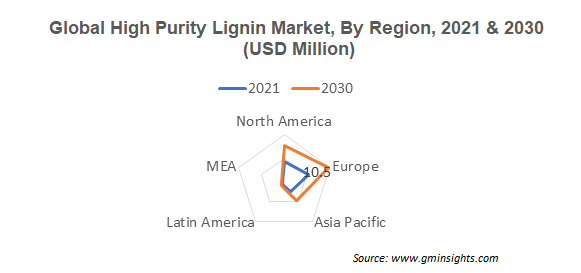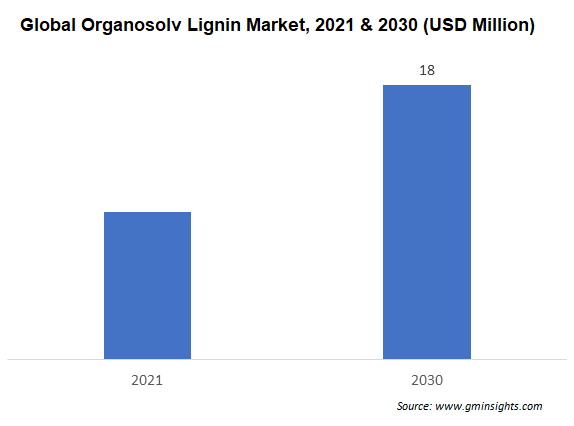Home > Chemicals & Materials > Specialty Chemicals > Custom Synthesis > High Purity Lignin Market
High Purity Lignin Market Analysis
- Report ID: GMI5360
- Published Date: Sep 2022
- Report Format: PDF
High Purity Lignin Market Analysis
In terms of product type, the high purity lignin market is segregated into organosolv, kraft lignin, and others. Among these, the organosolv segment is anticipated to cross USD 18 million by 2030. This can be credited to the widespread application landscape of this type of filler in the formulations of inks, paints, and varnishes. Unlike Kraft lignin, which is utilized only for a few types of polyurethane materials, organosolv can be adopted across a wide range of PU materials. A wider application scope may further augment product demand as compared to its alternatives.

Based on the source, the high purity lignin market is divided into straw, sugarcane bagasse, softwood, hardwood, and others. Among these, the softwood sourced high purity lignin segment is expected to reach USD 19 million by 2030, given the high reactivity of softwood lignin, among other notable features. Softwood is also highly applicable in the development of stabilized lignin fibers. Additionally, lignin fraction is considered greater in temperate softwoods as compared to hardwoods, contributing to the segment expansion.

With respect to the application spectrum, the high purity lignin market is categorized into activated carbon, carbon fiber, vanillin, phenol, binders and adhesives, and others. Of these, phenol segment is poised to depict a CAGR of over 6% through 2022-2030. The compound has key application potential in the pharmaceutical sector. Moreover, the phenolic structure has made high purity lignin a suitable alternative to some other materials, bolstering its consumption across the production of certain pharmaceuticals.

Europe high purity lignin market size was over USD 19 million in 2021 and is set to exhibit a growth rate of over 6.5% through 2030. There is increased demand from chemicals, phenols, vanillin, animal feed, and dispersants based on high-purity lignin. The increasing use of materials such as carbon fiber in construction and sports equipment will influence the regional market statistics. The surge in demand for electronics and electricals will drive the consumption of compounds such as epoxy resins and adhesives, further boosting the use of high purity lignin, which is a key element used for producing them.

